Brant: Night Struggle in Troy
Annotations
In the lower half of the image, Trojans and Greeks fight. In the top middle of the fight scene, Aeneas raises his battle ax and another soldier, Iopeus, whose name was either invented by Brant or misspelled past the point of recognition, holds out his spear against Androgeos, who falls back confused, since he mistook Aeneas' men as allies (370-82). In front of them, Iphitus and Chorebus attack more Greek soldiers (386-98). Though it is not apparent here, the Trojan soldiers have taken up Greek arms in order to disguise themselves and create confusion (386-98). Toward the right, Greeks flee to the safety of the wooden horse, while one runs toward a ship (399-401). Behind the fighting, the city of Troy burns, and beyond the city, hills and the sea fill out the rest of the landscape. (Katy Purington)
Woodcut illustration from the “Strasbourg Vergil,” edited by Sebastian Brant: Publii Virgilii Maronis Opera cum quinque vulgatis commentariis expolitissimisque figuris atque imaginibus nuper per Sebastianum Brant superadditis (Strasbourg: Johannis Grieninger, 1502), fol. 170r, executed by an anonymous engraver under the direction of Brant.

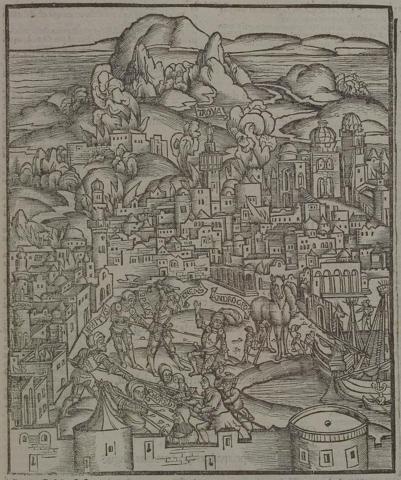



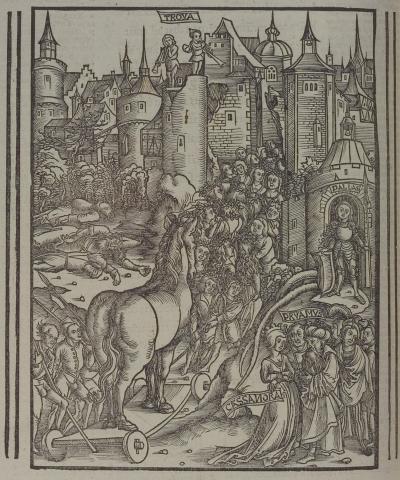
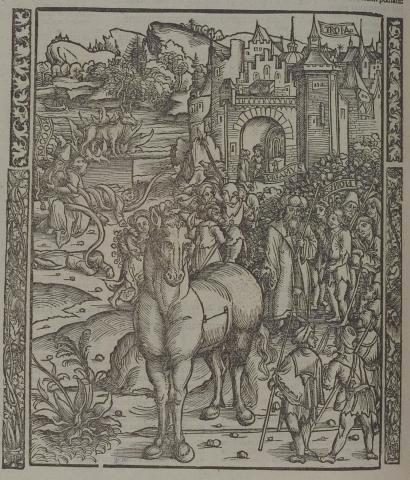

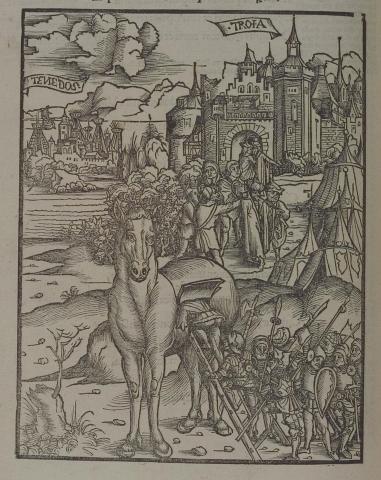

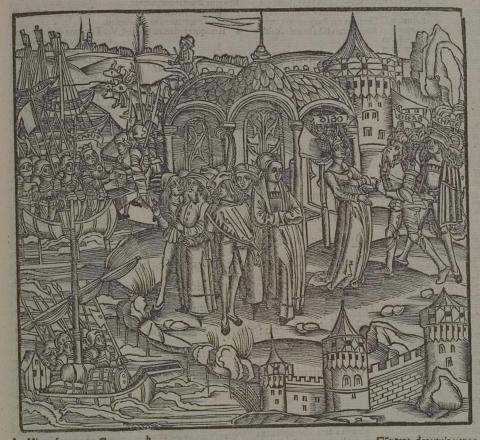
Sebastian Brant (1458–1521) was a humanist scholar of many competencies. Trained in classics and law at the University of Basel, Brant later lectured in jurisprudence there and practiced law in his native city of Strasbourg. While his satirical poem Das Narrenschiff won him considerable standing as a writer, his role in the transmission of Virgil to the Renaissance was at least as important. In 1502 he and Strasbourg printer Johannes Grüninger produced a major edition of Virgil’s works, along with Donatus’ Life and the commentaries of Servius, Landino, and Calderini, with more than two hundred woodcut illustrations. (Annabel Patterson)